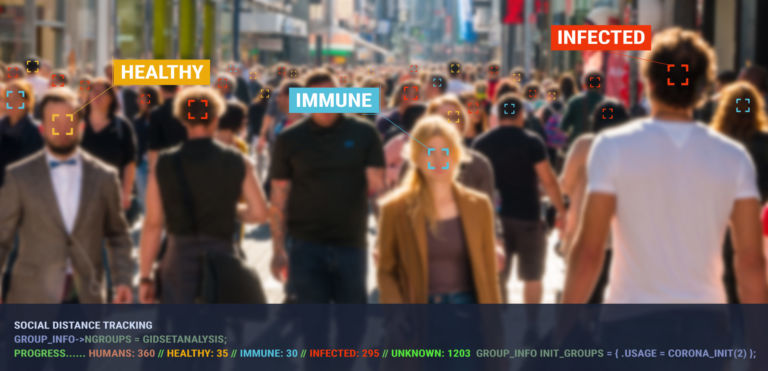The Centers for Medicare and Medicaid Services recently released a spending report showing that the rate of health care spending growth slowed for the second straight year.
Good news, right? Not really.
Despite a slower growth rate, the United States spent $3.9 trillion or $10,739 per person on health care in 2017. While some measures, such as the spending growth rate or uninsured rate, may seem to show promise for a more sustainable health care sector, total spending and related outcomes are still causes for concern.
Telemedicine could be the innovation that provides meaningful relief from expensive or hard-to-access care. Telemedicine is “the remote diagnosis and treatment of patients by means of telecommunications technology.” Health technology has many potential benefits that can help solve the problems of America’s health care system.
Telemedicine market projections show that the worldwide telemedicine market will reach just under $80 billion by 2022. Current research has begun to examine the use of this technology and how it may provide lower cost, higher access care that produces better outcomes in our health care sector. This month, a few notable research articles were published that speak to the potential benefits of telemedicine for our health care system. In the space below, I plan to detail the findings of the studies as well as what they mean for telemedicine policymaking.
The first piece of research is titled “The Use of Telemedicine by Physicians: Still the Exception Rather than the Rule.” Researchers used a survey to ask physicians where and how they use telemedicine. The study’s 3,500 respondents represent a robust sample, but there are methodological limitations that come with surveys and qualitative research generally. That is why the authors’ finding that physicians use telemedicine sparingly should be taken with a grain of salt.
Of the 3,500 respondents, 15.4 percent of practices had physicians who used telemedicine to interact with a patient, while 11.2 percent of practices had physicians that interacted with another physician. They also break down the telemedicine usage by medical specialty. In the survey, the three highest specialty users of telemedicine to interact with patients were radiologists (39.5 percent), psychiatrists, (27.8 percent), and cardiologists (24.1 percent). The authors also examined usage by geographical location and found that the use of telemedicine in a nonmetropolitan area was associated with a much higher rate of physician interaction with another health care professional. Physicians in metropolitan areas were more likely to video conference with the patient.
The next piece, titled, “Trends in Telemedicine Use in a Large Commercially Insured Population,” looked at how often telemedicine was used in a single, large commercial health insurance plan, including Medicare Advantage plans. This study has its limitations in that researchers only looked at a single commercial insurer, which could have different demographics when compared to another large commercial insurer. The study tried to determine if state parity legislation and the supply of county physicians affected the utilization of telemedicine in the enrollees of a large commercial health insurance plan. The users of telemedicine in their sample from 2015-17 were female mostly (68 percent) and resided primarily in urban areas (83 percent). Further, when broken down by services, most of the telemedicine usage was for mental health issues (53 percent) and for primary care (39 percent). However, by 2017, primary care was the most common use of telemedicine. The authors found no difference in telemedicine use between states with and without parity laws.
The final piece is titled “Reduced Cost of Specialty Care Using Electronic Consultations for Medicaid Patients.” The authors wanted to examine the rising number of referrals to specialists from patients’ primary care doctor. The referral process will introduce many costs, and the researchers sought to test if an electronic consultation or “eConsult” option would reduce costs for Medicaid patients who are referred to specialists. An eConsult option allowed specialists to be consulted first by the primary care doctor to determine if a follow-up appointment was necessary for referrals to dermatologists, endocrinologists, gastroenterologists, and orthopedics. The authors found that, following the introduction of the eConsult between the primary care doctor and the specialist, that spending per Medicaid patient was lower than without the eConsult option. Across the four specialties that were included in the eConsult observations, average costs were $84 less per patient per month compared to those given a referral for a face-to-face consultation. The paper mentions that between 1999 and 2009, specialty visits in the United States rose from 41 million to 105 million. It’s not hard to see the potential savings if this type of eConsult were used widely to coordinate care.
These three pieces of research are important for the evolution of telemedicine research and policy formulation. The first piece shows that, while it is innovative and full of potential, telemedicine is still fairly uncommon for patient-to-physician conferencing as well as physician-to-physician conferencing. However, it does show us that some specialties, like the ones noted above, are leading the way in implementing an innovative technology that can bring exponential improvements to health care access, cost, and outcomes.
Improving health care access is the most important benefit of telemedicine. This technology is designed to digitally connect patients and physicians by breaking down many of the physical barriers that could stand in the way of a patient accessing the care they prefer. The first two pieces give us some insight into exactly how telemedicine increases access for both urban and rural areas. Rural and urban areas have unique barriers to health care access. Telemedicine has the potential to enhance access to physicians for patients in urban areas without the worry of navigating public transportation or inner-city traffic. Telemedicine has the potential to increase access to health care in rural counties, which typically have fewer and more geographically dispersed health care facilities compared to urban and suburban areas.
Our country spends an enormous amount of money on safety net health care programs such as Medicaid. The third article I examined shows the potential savings from altering protocol slightly to institute an eConsult option before a face-to-face visit. Imagine the savings across the entire spectrum of government-funded health programs if small telemedicine innovations were implemented into the coordination of care process to save doctors time and money.
This is also an important reminder that harmful regulation of telemedicine can disrupt the natural evolution and adaption in the marketplace that is already underway. Parity laws that mandate equal reimbursement for this type of medical care are one such regulation. Parity laws were examined in the first two studies, and both found no significant difference in usage between states that have parity laws and states that don’t. Very careful consideration must be used to determine the way that telemedicine is implemented in the health care sector. Deference should be shown to physicians to implement telemedicine in ways that would benefit their patients the most.
As a country, we haven’t come close to fully realizing the benefits of telemedicine. It has the potential to revolutionize the way care is delivered and coordinated. A more efficient health care system means healthier people and more money in the pockets of patients.


